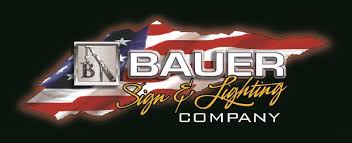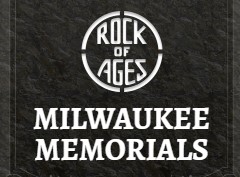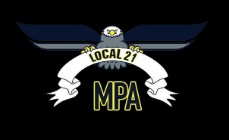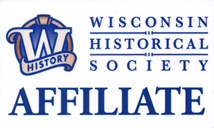Milwaukee Police Terms From Bygone Days
Many agencies have terminology unique to their region or a time period in their history. Milwaukee is no different. Much of this can disappear if not passed on or documented. This page will attempt to do just that. Retired MPD Officers Douglas Campbell and Ken Henning have put together an excellent glossary of these terms. If you see errors, or can add to these terms, please send us a note and we will make the changes.
Flashing Blue Light
When a patrolman was walking the beat and someone wanted to get in touch with him, they flashed the blue lights that were on top of the call boxes on his beat. The officer was then required to go to one of the call boxes, pick up the phone and state, “Officer Jones on the light.” This was before the department had handie talkies.
Banging You
In the old days when the squad cars had one-way radios (receiving only) and the dispatcher wanted to alert any or all cars to an important assignment, the dispatcher would ”bang” a gong (or cymbal) and then broadcast the information. The squad crew then proceeded to a police call box to acknowledge receiving the message.
Blood Run
A blood run meant that a squad was sent to the blood center and conveyed a container of blood (usually 10-17) to a local hospital.
Check a Half
If you were assigned to the old District One (821 W. State Street) and were told by the dispatcher to “Check a Half”, it meant you had to go to the nearest dairy and get some half and half (cream) so the dispatchers could have cream for their coffee.
Cop, Copper
1. Short for Constable on Patrol (or Parade)
2. The copper coins he carried in his pocket, being so poor that was all he had.
3. The large copper buttons on his uniform.
Needle Car
Name for the speedwatch car. These were equipped with special rubber coated wires that were stretched across the roadway and connected to a machine that would measure the speed of vehicles as they passed over them. On top of the machine was a piece of graph paper, which was placed under a “needle” pointer, which indicated the speed in miles per hour. It was pre-inked, and the officer was required to press down on the needle to “lock” the violator’s speed on the paper. The officer, having done this, then had to disconnect the wires before pulling away from the curb and pursuing the speeder.
Pin Card or Punch Card
In the old Bureau of Identification (B of I), handwriting samples were kept on what looked like computer cards. This was long before computers were in use. Each card had specific holes punched in certain areas to designate the characteristics of the handwriting. The technicians then used long thin rods or pins and manually pushed them through the holes in the cards, which were stood on end in a long box. They then lifted the rods and shook the cards, causing some of them to fall back into the box or remain on the rods, thus sorting
them by classification.
Stick Up
Old term for a field interrogation (field interview, i.e., F.I.). When a cop approached someone for this purpose, he had his baton (night stick) held in an upright, ready position, thus the expression “stick up.” If it appeared that the person being stopped was a real desperado, the officer would pull out his revolver and say, ”Stick ‘em up.”
Straw Box
A place where a police officer could get out of the elements. One is on display in the “Streets of Old Milwaukee” in the Milwaukee Public Museum. It was a large enclosed kiosk with a police telephone inside. In cold weather, a bale of hay or “straw” was placed on the floor to insulate the feet from the cold. It was so comfortable, in fact, that some police officers spent too much time in them and fell asleep. “Straw boxing” came to mean a place where officers could go to be out of the public view, for report writing, etc.
Hit the Rug
In the old days, the Inspector of Police was the disciplinarian of the Department. He had a small rug in front of his desk. When you were called there for discipline, you had “hit the rug.”
Chair Carry
When the police department had the largest and fastest ambulance service in the city, officers would have to carry people on stretchers from their homes to the ambulance. In some older Milwaukee homes and apartments, the stairways were too narrow or winding for a stretcher. The officers would then use a straight-backed chair (usually kitchen), strap the person to it and “chair carry” them down the stairs.
Dime Beer Night
Once a feature at County Stadium. Beer cost a dime, which led to a cheap way of becoming drunk. Milwaukee Police Officers used to cover all stadium events until the Milwaukee County Sheriff took ove. In 2005, the police department began providing coverage again. Being assigned to a “dime beer night” meant making arrests for drunkenness, disorderly conduct, and resisting an officer. There was also a good possibility of getting soaked in beer by the other fans as you subdued your prisoner and walked him to the police room.
Cushman
The brand name for a motorized scooter, somewhat like a golf cart, once used for patrolling the zoo parks. They were very unstable and easy to tip over. Last used for distributing soft drinks and water to officers along the route of the Great Circus Parade.
Suicide Strap
On the old style Sam Browne belts there was a strap that went over the shoulder to the belt, similar to what the “Mounties” wear over their red uniform jackets. A subject could grab it and then swing an officer around, causing injuries.
Judgement Roll
Obtained from the clerk of courts without a review by the City Attorney. This was for city ordinance violations only. The officer swore to the facts, signed it, and then proceeded to “misdemeanor” court with the prisoner in tow. When the case was called, the officer rose to his feet, announced “In custody, your honor,” and proceeded to give testimony.
Warhorse
When not assigned to a permanent squad, an officer who “war horsed” was one who had a different assignment every day or night, i.e., walked the beat, rode the wagon, worked the desk, etc. If you were not assigned to squad duty the day before, you usually did not know what your assignment was until you reported for duty.
Hitch (On a; or We’ve got a)
When patrol wagons were drawn by horses, the horses had to be tied to a “hitching post” while the officer conducted business. Thus, they were “tied up on a hitch” and unavailable.
Mama Sheet or Big Book
When a person was processed after an arrest, they were asked who their mamma was, where she lived, and other family information. This information was then available to locate the person at a future date. It included the relatives who lived in town as well as who the person was with when they were arrested. This information was kept in the B of I in very large books arranged in order by their assigned B of I number (arrest number). When calling the B of I for a record check, the police aides would go to the card file, locate the person
(s), retrieve his B of I number and then proceed to the Big Book and give the officers the information. For court, the police aides would type up record sheets on a daily basis and take the records to the officers in court.
Postman
A traffic officer assigned to patrol at a specific post. Certain intersections (before traffic control signals) had to be covered during peak traffic periods, and this was accomplished by the traffic “post” officers. When not directing traffic, they patrolled on foot nearby, usually a business district, and provided police service to the merchants and their customers.
Pull the Hook
In the old days, call boxes had a lever that was to be pulled once if an officer needed assistance, and twice if he requested a patrol wagon for a prisoner conveyance. The console operator at the district station monitored each call box and was able to determine where an officer had “pulled the hook.” The shift commander could also check an officer’s location by instructing him to pull the hook. Or when the officer got his last mark for the day, he was told to pull the hook to indicate he was still on the beat for his last mark (timed check in). Pulling the hook became synonymous with retiring from the job.
Benny
A motorcycle officer’s large, knee length winter leather coat, worn when he rode the motorcycle during winter months. It was a heavy coat with a fur collar. The name”Benny”comes from “Benjamin,” a slang term for a man’s loose fitting overcoat.
M.O. Hearing
When an officer took a person into custody under Wis. S.S. 51, he had to appear at the next session of court and swear in front of a judge to the probable cause for detention. This was done at the convenience of the judge. Sometimes the officer had to wait for hours until court recessed and then go into the judge’s chambers (for reasons of privacy) where testimony was given and the probable cause form was signed.
Wagon House
Where the horse drawn police wagons were kept when not in use. It was in the charge of the “wagon boss,” whose job was to feed and care for the horses and wagons. The term was kept when the Police Department transitioned to automobiles. The wagon boss became the garage boss, and was traditionally the senior officer on the shift. His duties included maintaining the police vehicles and all garage equipment, as well as the cleanliness of the garage. Later, this was performed by the Lieutenant of Police (Garage) and Police Sergeant (Garage).
Wheel
A motorcycle was known as a “wheel” because motorcycle officers were allowed to wear a “Wheel” patch on their uniform to distinguish them from other police officers. “On the wheel” meant being assigned to motorcycle duties. The Motorcycle Unit to this day still wear the round wheel patch on their jackets.
Dogwatch
When police officers were assigned to cover election-polling places, one officer was assigned the “Dogwatch.” This meant he was responsible for relieving individual officers at their assignments so they would be allowed to go to their home polling place to vote, and then return to duty.
Flying Squad
Circa 1927, specific officers, usually detectives, assigned to station house duty until some major crime was reported. They then “flew” to the scene in squad cars and saturated the area to investigate, arrest suspects, or take control of the situation.
Sticks
When the police department had an ambulance service, the “sticks” were the stretchers that went on top of the ambulance cart. They were called sticks because they were nothing more then two sticks with handles inserted into a canvas carrier. The carrier had a ”boot or shoe” sewn on the end to prevent patients from falling out if they had to be carried vertically.
Station Security
Initiated during the civil disturbance of 1967. Two police officers were assigned to each district station for the “security” of the building and the officers inside. This was a twenty-four hour operation, seven days a week. Officers “patrolled” outside the station for their entire tour of duty, regardless of the weather. This duty continued until 1984, when it was discontinued because it was considered a poor resource of manpower.
Call in Your Citations
A beat officer had to call his station and inform them of the number and type of citations issued during his tour of duty. Back then, an officer was technically “off-duty” after getting his last mark at a call box on his beat and did not have to return to his station. He would leave his citations in the call box and a squad would pick them up and turn them in at the station.
Sap
Also known as a “billy, blackjack, or beavertail” – a hand weapon consisting of a piece of leather-enclosed metal (usually lead) with a strap or spring loaded shaft for a handle. This was before long batons and expandable batons became standard impact weapons. Plain-clothes officers, detectives and sergeants were required to carry these while on duty. Prior to 1980, all off-duty officers were required to carry a baton or billy in addition to their badge, call box key and revolver.
Sap Gloves Leather gloves that had lead sewn into the palms and fingers. Worn by some officers in lieu of carrying a sap or billy, prohibited equipment.
Alternate Off-Days
When an officer was disciplined, in lieu of suspension, he was required to work a specific number of “alternate off days” without pay. While this meant extra work for the officer, his family was not punished because he still received a full paycheck. This was later ruled as an unfair labor practice.
Blue Card
The “blue card” or drunk card was a blue 3X5 pre-printed information card carried by the officer. It was used to take a person who was drunk into custody for being drunk in public. The suspect’s name, d.o.b. and address along with address and date of violation was quickly written on the card and given to the responding wagon conveying officer(s) who took the person to be booked at a district station or to the city jail. The fine for being “Drunk” was only $10.00 in the 1970’s when the card was discontinued.
Park & Walk
When officers were working a two-man squad at nighttime, usually the “rookie” officer would have to get out of the squad and walk their squad area from 2-4 hours. When they did walk, they filled out a salmon colored card (just like the present overtime card) filing in the day, date, time and area they walked.
Call Backs
Before we had the C-codes, the officers before securing would report to the district office and retrieve the squad assignment disposition from the teletype machine. They would write their disposition in a book that was kept in the office area. Communications would teletype all of the hitches from the shift listing the squad sent, time sent, and type of call that was given to you.
Plant Job
Members assigned to the CIB would be assigned to guard the Chief of Police and Mayor’s House on a nightly basis. They would be planted in an unmarked squad parked in front of the residences. The detectives could not leave until the end of their shift.
Driver
After Chief Robert Ziarnik, the practice of having a police officer position for driving the chief was discontinued. Prior, all the ranks of chief had a police officer driver picking-up and dropping them off at their residences every day.
History
Department
The Years
Profile














